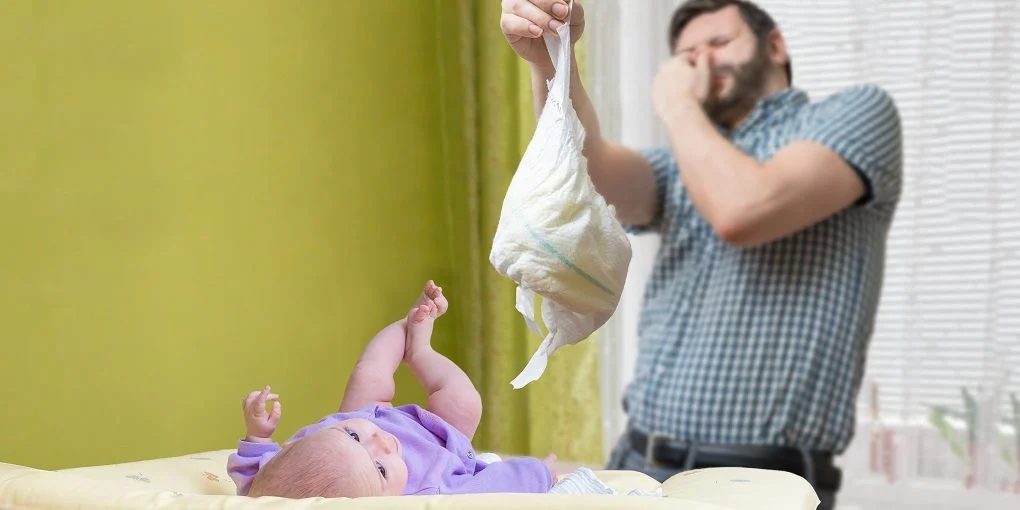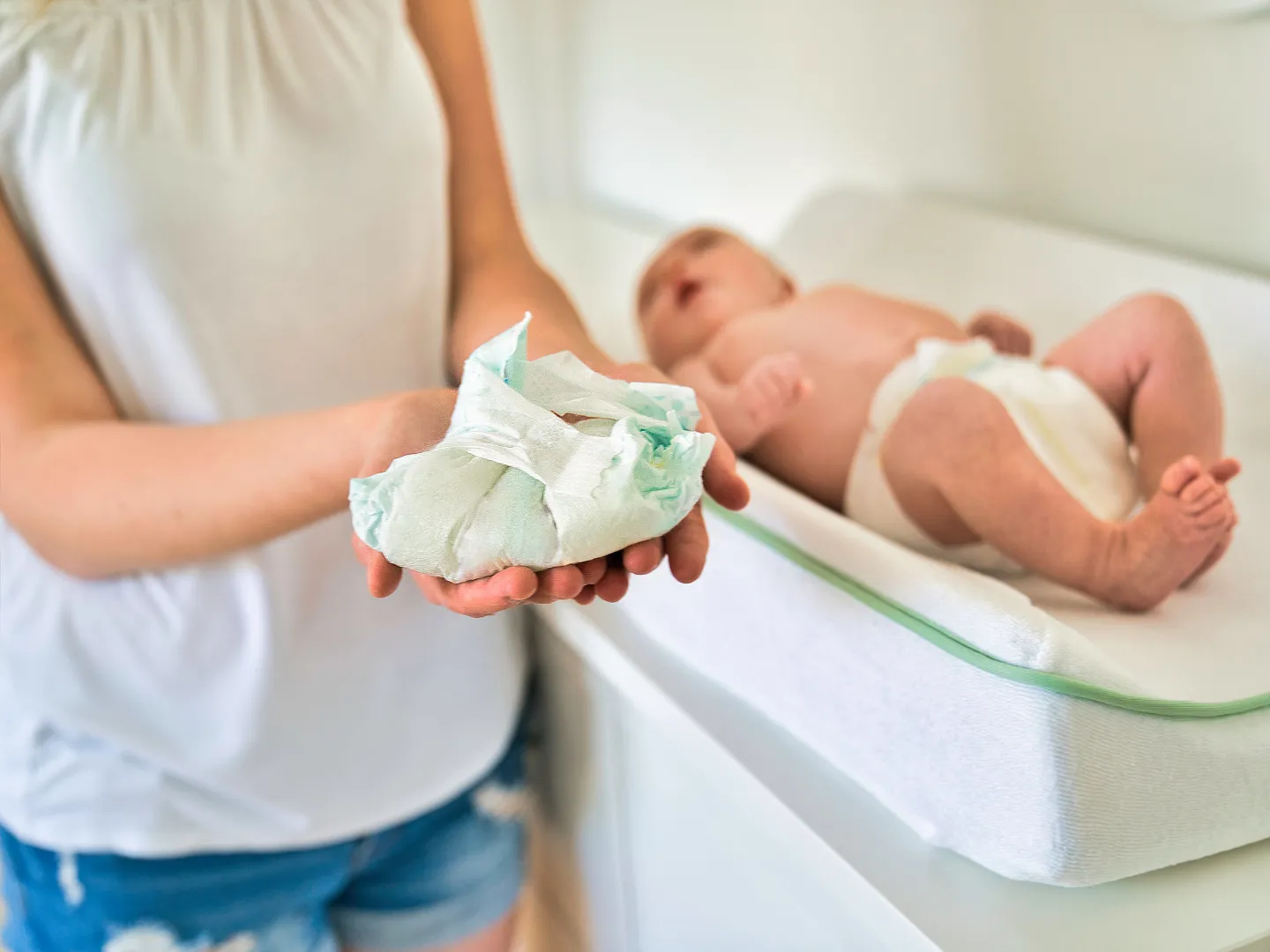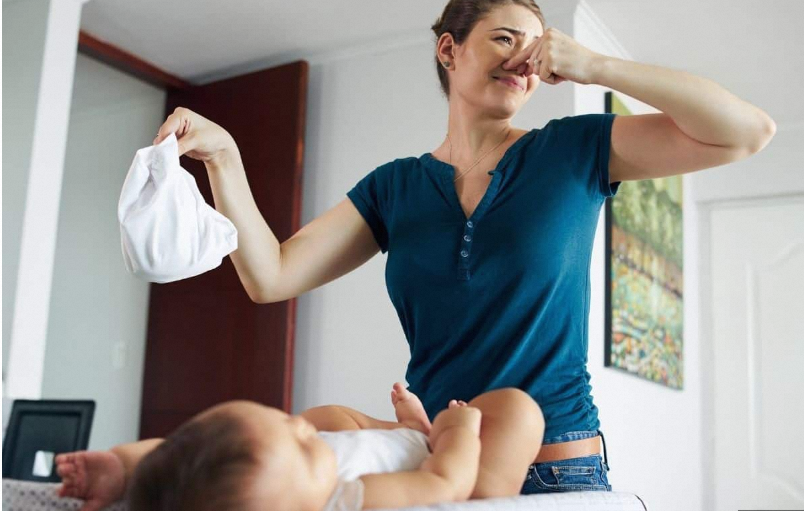Changing Poopy Diaper-Exploring Every Step
While the previous response offers a clear and concise guide, let’s delve deeper into each step of changing a poopy diaper, exploring nuances and considerations:
 Preparing for the Change:
Preparing for the Change:
1. Gather Supplies:
Diaper changing pad: Consider using a wipeable surface for easy cleaning. Explore waterproof pads or changing mats with raised edges to prevent rolling.
Clean diapers: Experiment with different brands and sizes to find the best fit and absorbency for your baby’s needs. Consider overnight options for larger poops.
Wipes: Opt for water-based, fragrance-free wipes to avoid irritation. Explore reusable cloth wipes for an eco-friendly alternative.
Diaper cream (optional): Choose a zinc oxide-based cream for added protection, especially for babies prone to rashes. Explore natural or hypoallergenic options if concerned about sensitivities.
Disposal bin: Have a lidded bin close by for hygienic disposal of the dirty diaper. Consider using designated diaper pails to control odor.
Clean washcloth (optional): While wipes are convenient, a warm washcloth might offer a more thorough clean, especially for sticky situations.
2. Lay your baby on their back:
- Choose a comfortable and secure surface like a changing table or mat. Ensure it’s sturdy and well-equipped with safety straps or raised edges to prevent falls.
- Talk to your baby and sing songs or engage them with toys to keep them calm and occupied during the process.
3. Wash your hands thoroughly:
This crucial step helps prevent the spread of germs and keeps your baby healthy. Use soap and water for at least 20 seconds, ensuring you clean between your fingers and under your nails.
Removing the Dirty Diaper:
Open the diaper cautiously:
Fold the dirty parts inward to contain the mess as much as possible. Look for any signs of redness, irritation, or unusual stool consistency that might warrant consulting your pediatrician.
Wipe away most of the poop:
Start from front to back with gentle wipes to avoid spreading bacteria. Use multiple wipes if needed for thorough cleaning. Consider using a gentle cleaning solution on the washcloth for stubborn messes.
Dispose of the wipes responsibly:
Avoid flushing wipes, even if labeled “flushable,” as they can clog plumbing. Dispose of them in a lidded bin.
Clean your baby thoroughly:
- Use warm water and the washcloth (if using) to gently clean the remaining poop, especially in the creases around the buttocks and genitals. Be extra careful and gentle in these sensitive areas.
- If using wipes, ensure they are fragrance-free and gentle enough for the delicate skin.
Pat the area dry: Use a soft, clean towel to pat the cleaned area thoroughly. Avoid rubbing, as it can irritate the skin.
Applying Cream After Diapering(Optional):
Choose a safe and effective cream:
Look for a zinc oxide-based cream formulated for diaper rash prevention or treatment. Consider seeking your pediatrician’s recommendation for specific brands or ingredients.
Apply a thin layer of cream:
Avoid over-applying the cream, as it can trap moisture and contribute to irritation. Focus on areas prone to redness or chafing.
Putting on the New Diaper:
Lift your baby’s legs and slide the new diaper underneath:
Ensure the tabs are positioned correctly, aligning with the front and back of the diaper.
Fasten the tabs securely but comfortably:
Avoid making the diaper too tight, as it can restrict movement and cause discomfort. Check for snugness around the legs and waistband to prevent leaks.
Double-check for leaks and comfort:
Gently press around the leg cuffs and waistband to ensure a snug fit without being constricting. Look for any signs of redness or discomfort your baby might express.
Finishing Up:
Dispose of the dirty diaper securely:
Wrap the dirty diaper tightly before throwing it away in the lidded bin.
Wash your hands again thoroughly:
This is crucial to prevent the spread of germs to yourself and others.
Offer your baby some playtime or cuddles!
Reward your baby’s patience and cooperation with positive reinforcement and affection.
Additional Tips:
- Be prepared for unexpected messes. Keep extra wipes and a change of clothes nearby, especially for younger babies.
- Avoid changing your baby on a cold surface, as it can be uncomfortable.
- Distract your baby with toys or songs to keep them calm and engaged throughout the process

